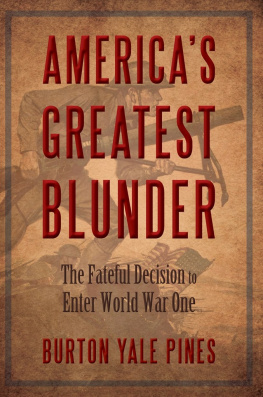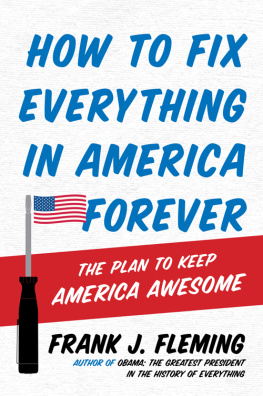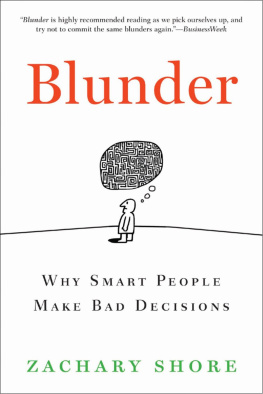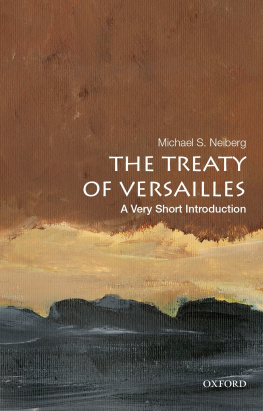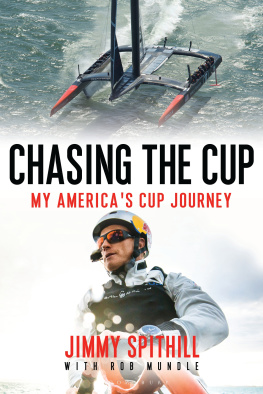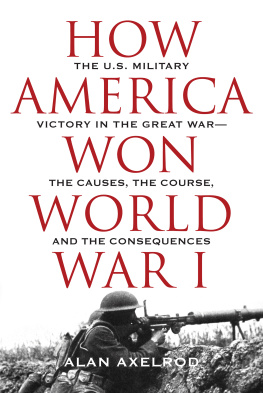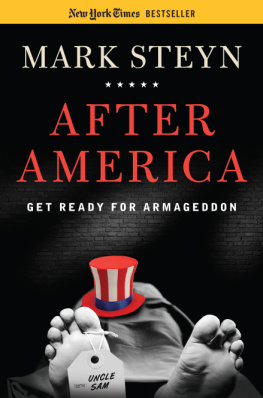With great pleasure I extend my deep gratitude to Samuel Vaughan and Theron Raines, both legendary editors, whose incisive suggestions immensely improved my narrative; to Richard Heffner, long-time producer and host of Public Televisions The Open Mind, whose buoyant encouragement kept me at the too often frustrating tasks of finishing and publishing this book; to the research rooms staff at the New York Public Library; to Professors George L. Mosse, Michael Petrovich, Harvey Goldberg and their associates at the University of Wisconsin (Madison) Department of History who, in the grand Frederick Jackson Turner spirit, trained me in the craft of historical research and analysis; to Richard M. Clurman, Time-Life News Service Chief of Correspondents, and my colleagues at Time Magazine who taught me how to report events in ways accessible to the broad public; to five generations of World War One historians whose impressive research and provocative analyses allowed me to draw the conclusion central to the books thesis; to Jason Eiker-Wiles whose sharp proofreading eye and wry wit helped push me across the finish line towards publication; to the creative and encouraging staff of Hillcrest Media which designed the books exterior and interior layouts; and to the members of the World War One Historical Association and the vast universe of World War One enthusiasts on Twitter, LinkedIn and elsewhere on the Web whose effervescent fascination with all aspects of that great conflict convinced me that someone, somewhere would be interested in what I was writing.
INTRODUCTION
A FATEFUL AMERICAN DECISION AND THE CENTURY PIVOTS
I T WAS APRIL 5, 1917 and characteristically cloudy along almost the full 475-mile line running from the North Sea to the Swiss border. It was a line of brutal devastation, of rows upon rows of fortified trenches, dividing two massive military machines, millions of men in each, which had battled and bloodied each other for almost three years. For almost as long they had been stalemated and deadlocked along that line, known as the Western Front, despite hurtling unprecedented numbers of troops at each other in one massive offensive and counteroffensive after another, suffering unprecedented casualties, counted not in the tens or even hundreds of thousands but in the millions, in futile attempts to break their deadlock.
The following day, that deadlock would start coming undone. On that day, April 6, 1917, the United States entered what was being called The Great War, bringing its extraordinary industrial and manpower resources to the side of Britain and France and against Germany. With that decision, America transformed the conflict into a true world war. More significant, much more consequential, with that decision America transformed the war from a conflict that not only, as historians long have recognized, dropped the curtain on the 19th Century and its optimistic belief in perpetual progress, but simultaneously raised the curtain on a new century, one that was to be cursed by almost nonstop war and tension.
With todays enviable and indulgent perspective of a centurys hindsight, it can be said that Americas decision to enter the Great War was one of historys rare pivot points. As the few others before itan English monarch accepting the Magna Carta, Luther nailing his theses to a church door, thirteen British colonies declaring independence and Napoleon carrying the French Revolution across Europeit too changed history profoundly. The dispatch to Europe of more than two million American doughboys, as they affectionately became known, sharply tilted the balance on the stalemated Western Front and, in effect, won the war against Germany. This allowed Britain and France to impose a punishing peace on the vanquished, thus setting in train events and actions that helped make the 20th Century the Wests most destructive as it subsequently suffered the horrors of Nazism, the devastation of yet a second great and even broader war and the often terrifying tensions and at times bloodshed of a Cold War. Without Americas 1917 entry into Europes war, the 20th Century would have been extraordinarily different: No punishing Versailles peace treaty, no humiliation of Germany, no toxic German drive for revenge, no Hitler, no World War Two and likely no Cold War. Entering Europes war truly was a gigantic and fateful American decision. As it turned out, it was Americas greatest blunder of the century.
The April 6 declaration of war against Germany was no surprise. America had been inching toward it for many months. Yet, three years earlier, when the war had erupted in Europe on August 2, 1914, it would have been a wild, long-shot bet that America would enter it at all. Far from it. And were America to do so, it was no sure thing that it would enter against Germany. At wars onset, Washington immediately proclaimed its neutrality and vowed to treat all belligerents equally, showing no favor to any, as President Woodrow Wilson promised the nation and the world. Had that promise been kept, 20th Century history would have been enormously different. But Washington, almost from the wars first days, began backpedalling, skewing and undermining its neutrality, treating Britain and its allies with understanding and leniency (and giving them extensive economic support) while treating Germany with unrelenting rigidity. How and why genuine neutrality withered, despite its almost unanimous backing by the American public, and how and why America turned against Germany are the first half of the tale of how Americas entering the war transformed the century.
This half of the tale is a fabric of many interwoven strands: of skilled British propaganda in America trouncing German propaganda, distorting and even fabricating facts to convince the American public that Germany was Americas enemy and that Germans were committing unspeakable atrocities and behaving as barbaric Huns; of growing American banking, manufacturing and farming dependence on sales to Britain and France, with the simultaneously growing fear that a British or French defeat or even setback would destroy profits and plunge America into deep recession; of a Wilson policy that putatively prohibited all American loans to every belligerent but in fact opened a spigot of dollars to the Allies (as Britain, France and their allies were known) while completely shutting out Germany; of actions that selectively defended Americas freedom of the seas, protesting strongly and issuing ultimatums against German submarine attacks on shipments of goods to Britain and France while looking the other way when Britains massive naval blockade prevented American ships from, as custom and law entitled them, reaching German ports.

